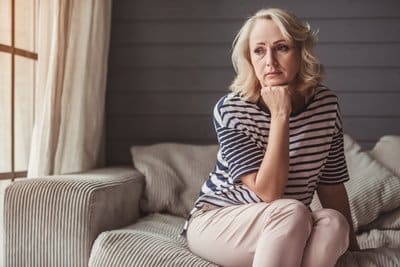Does the thought of shorter days and longer nights with the coming fall and winter months cause you to feel more down that you think you should? The changing seasons cause changes in the way we feel as well, but if the feelings linger and you have felt moody and unenergetic for more than a couple of days, you may be experiencing SAD or Seasonal Affective Disorder.
SAD is a type of depression that comes and goes with the seasons. It usually begins in late fall or early winter and then goes away in spring and summer. Episodes which start in spring or summer are much less common. SAD is more common in women, young people, and in geographic regions which are further from the equator (and therefore receive shorter amounts of daylight in the fall and winter months). Symptoms often begin rather mildly and become more severe as the season progresses. The exact causes of SAD are unknown, but some experts believe it is related to an imbalance in levels of serotonin in the brain. The brain makes less serotonin during periods of decreased sunlight, causing irregular functioning in brain pathways that regulate mood.
General symptoms of SAD include some or all the following:
- Feeling depressed most of the day, nearly every day
- A gloomy outlook (think Eeyore the Donkey!)
- Feeling hopeless or worthless
- Loss of interest or pleasure in things previously enjoyed
- Low energy
- Problems with sleeping
- Changes in appetite and/or weight gain or loss
- Thoughts of death or suicide
Symptoms specific to winter-onset SAD (sometimes called “winter depression”) more often include: oversleeping; increased craving for high carb foods and weight gain; and tiredness or low energy. Symptoms specific to summer-onset SAD (sometimes called “summer depression”) more often include: trouble sleeping or insomnia; poor appetite and/or weight loss; and agitation or anxiety.
The easiest and simplest treatment for SAD is exposure to light. Start by getting outside during periods of maximum natural light Additional use of light therapy can replace the sunshine lost due to shorter days and or cloudier grayer periods. A light therapy box provides daily exposure to bright, artificial light. But for some people, light therapy alone is not enough. Antidepressants and other medications may be prescribed by your doctor. As with other types of depression, SAD can worsen and lead to complications if not diagnosed and treated. Eating a well-balanced diet, regular exercise, and maintaining regular social activities can help prevent SAD – even on the darkest days of winter.
Remember, it’s normal to have some days when you feel down. But if you continue to feel down for several days or just can’t get motivated to do normal daily activities, consider seeing a healthcare provider. This is especially important if there’s been a change in your sleep patterns or eating habits, you turn to alcohol for comfort or relaxation, or you feel hopeless or think about suicide. Integrity Urgent Care is here for you daily 8 am – 8 pm and no appointment is ever needed. Contact one of our four convenient locations today for more information.
Resources:
Goldberg J. [reviewer]. WebMD [online]. Seasonal depression (Seasonal affective disorder). Reviewed 13 Apr 2018 [accessed 27 Sep 2018]. https://www.webmd.com/depression/guide/seasonal-affective-disorder#1-2
Mayo Clinic. Seasonal affective disorder (SAD) [online]. [Accessed 27 Sep 2018.] https://www.mayoclinic.org/diseases-conditions/seasonal-affective-disorder/symptoms-causes/syc-20364651
MedlinePlus.gov. Seasonal affective disorder [online]. Updated 6 Mar 2018 [accessed 27 Sep 2018]. https://medlineplus.gov/seasonalaffectivedisorder.html


